Celle qui a tourné dix mille fois sept fois sa langue dans sa bouche avant de ne pas parler, ou elle en est morte, ou elle connaît sa langue et sa bouche mieux que tous
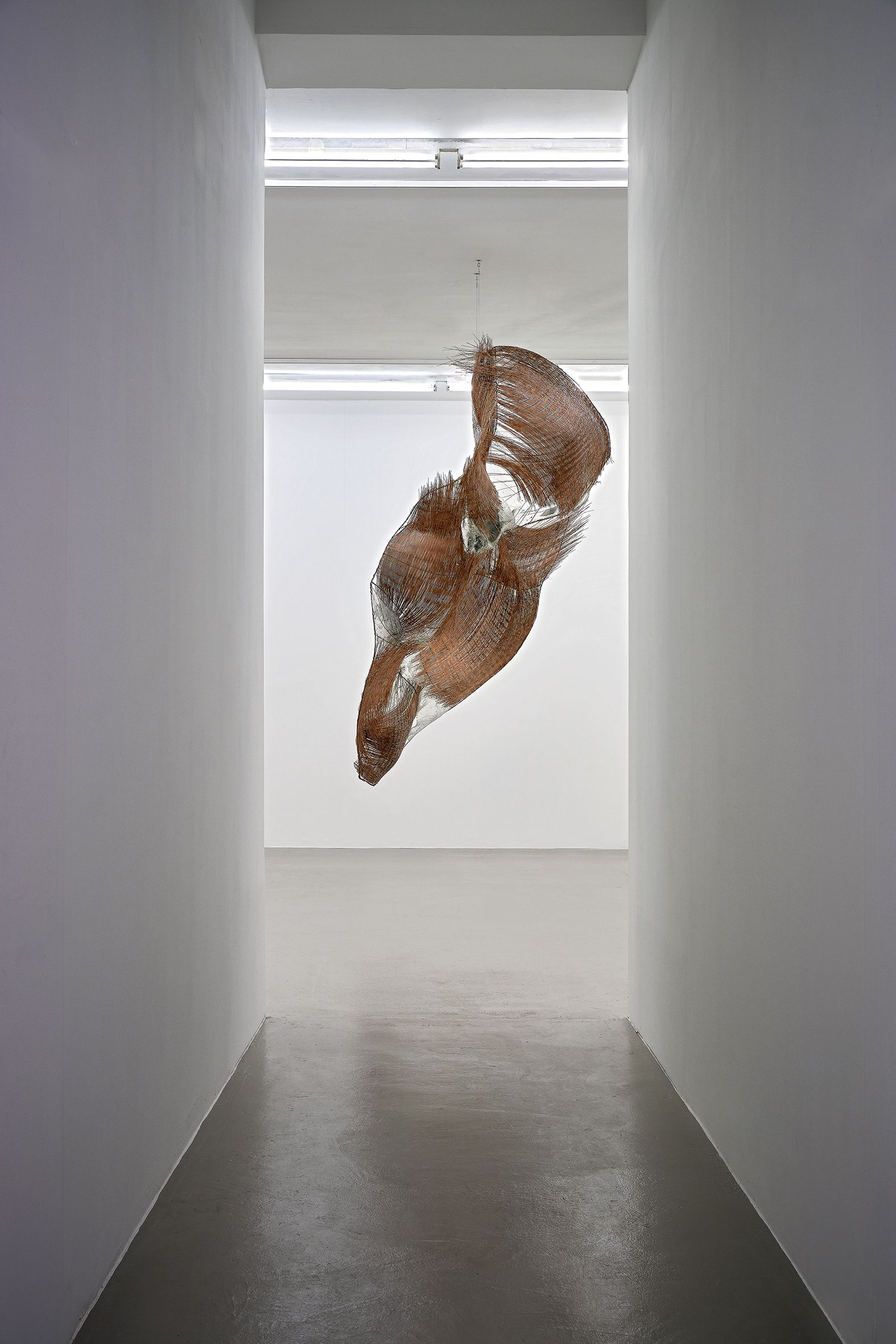
In his book, ‘L’île aux femmes’, Serges Dunis tells a Polynesian myth in which Hina, an inhabitant of an island where only women live, immerses her aging body in water. Her skin and hair float to the surface and she moults. In order to replenish her body, she exposes it to the sun for a long time. The process of regeneration goes through the moult. It was around this thought that we created Celle qui a, a synthetic membrane woven of copper and covered with resin, as if to freeze the weaving that was disintegrating. Women in white overalls came to take care of the place, of the sculpture, through singing, the movements of their bodies and the passage of a strange resin mask.For the exhibition Rituel.les, we imagined a second form of moult, more human this time.
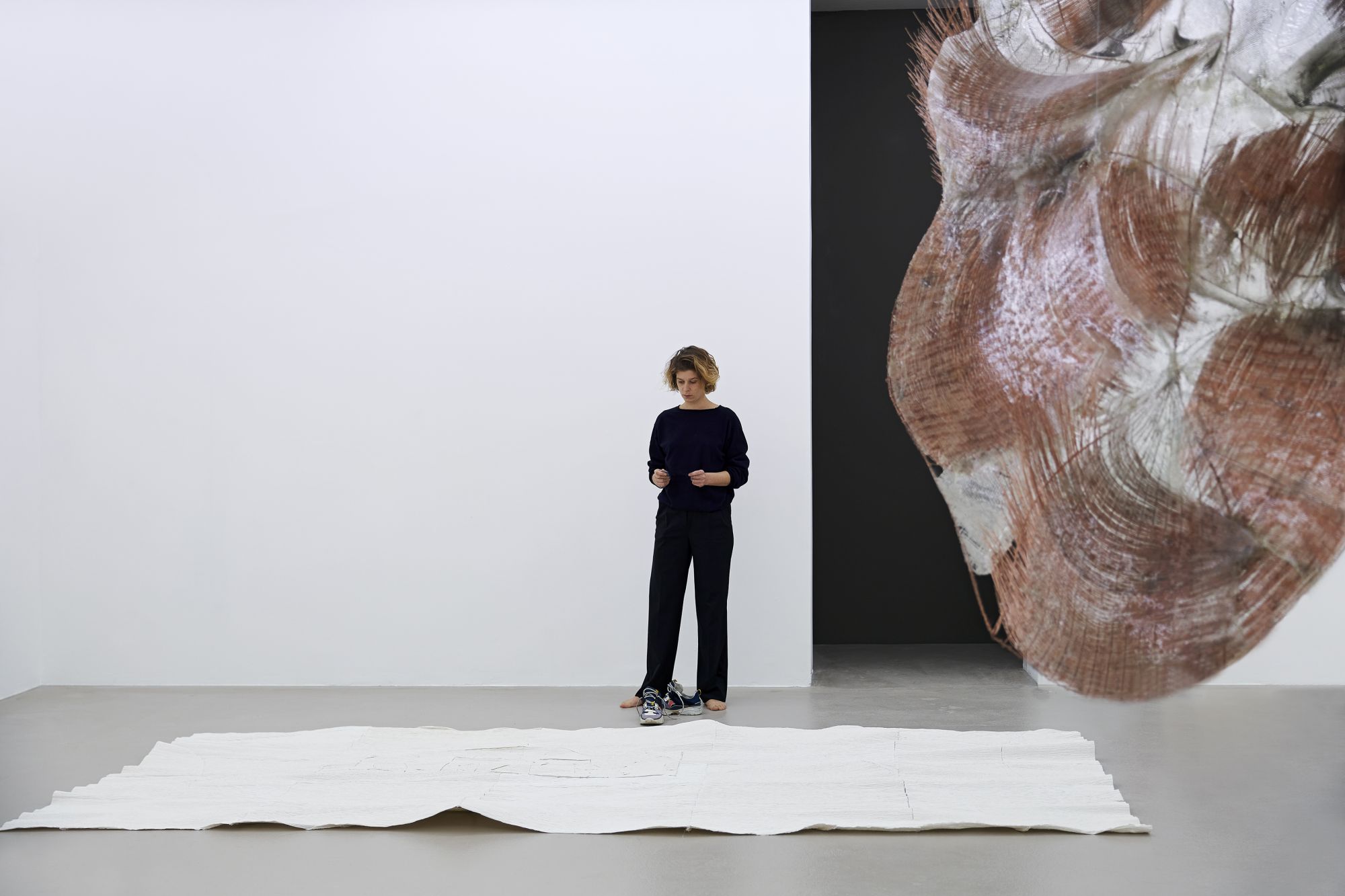
A paper made of vegetable fibres, produced in a mill near Limoges, is dried in a press that gives it its crease. The paper is puckered, folds are frozen, time is frozen. A patchwork is made from assembled pieces of this paper. Curves run through it, like scars. In its centre, seams are revealed that draw the silhouette of a dress that could dress an absent body.

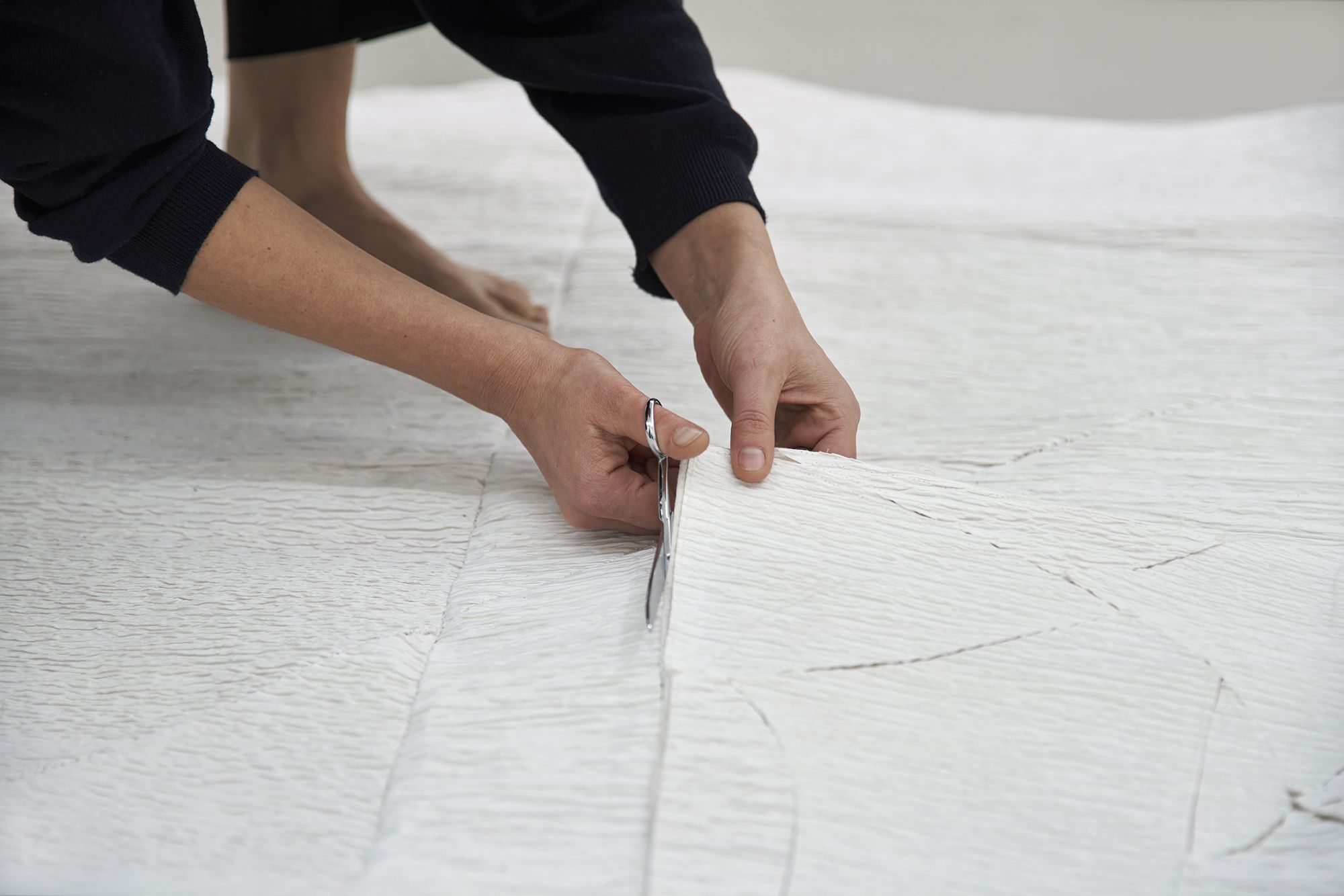
During the performance, the fiction takes shape. A woman comes and cuts out the dress from the paper patchwork and puts it on. There are no more sounds in the walls, in the ceiling. She looks at the suspended sculpture, comes into contact with it, through her movements, through her attention, through the song she offers in the hollow of the copper weaving. She is alone, but one can still hear in memory, if one had been there before, the polyphony of songs. Slowly she crosses the space and goes away, leaving in the heart of the pleated paper patchwork the imprint of an evaporated body. Later the dress will be sewn back on and the story may begin again.
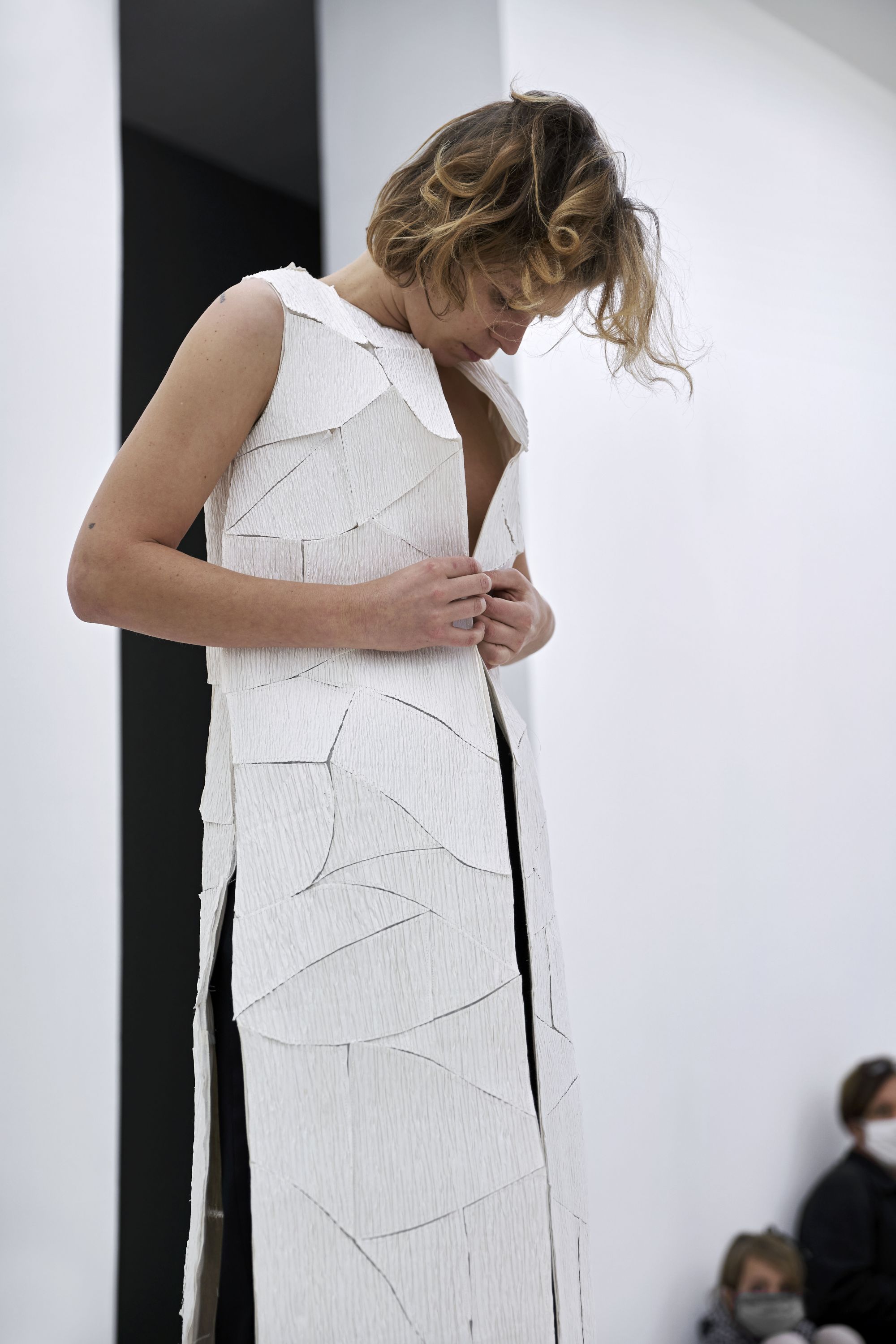
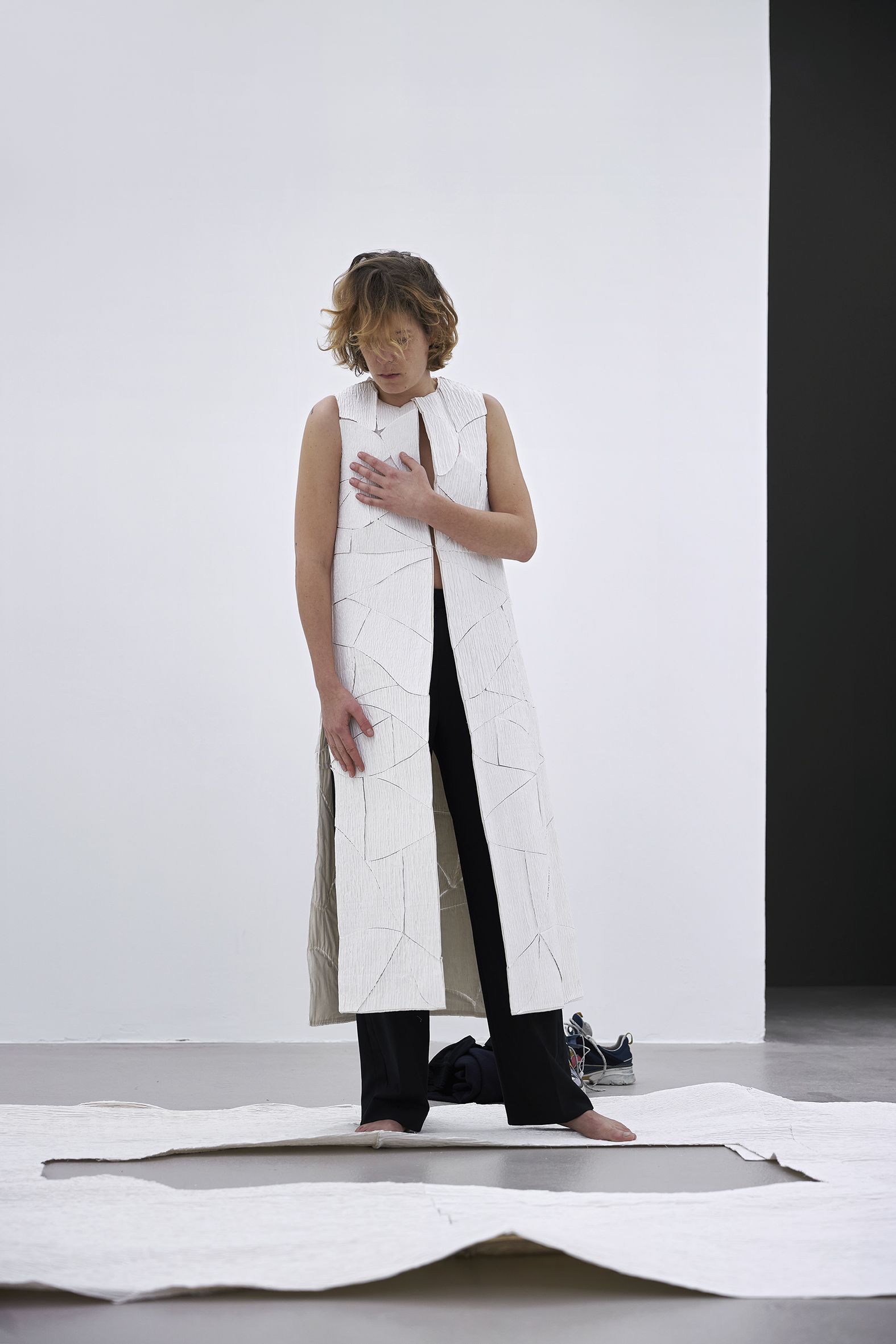
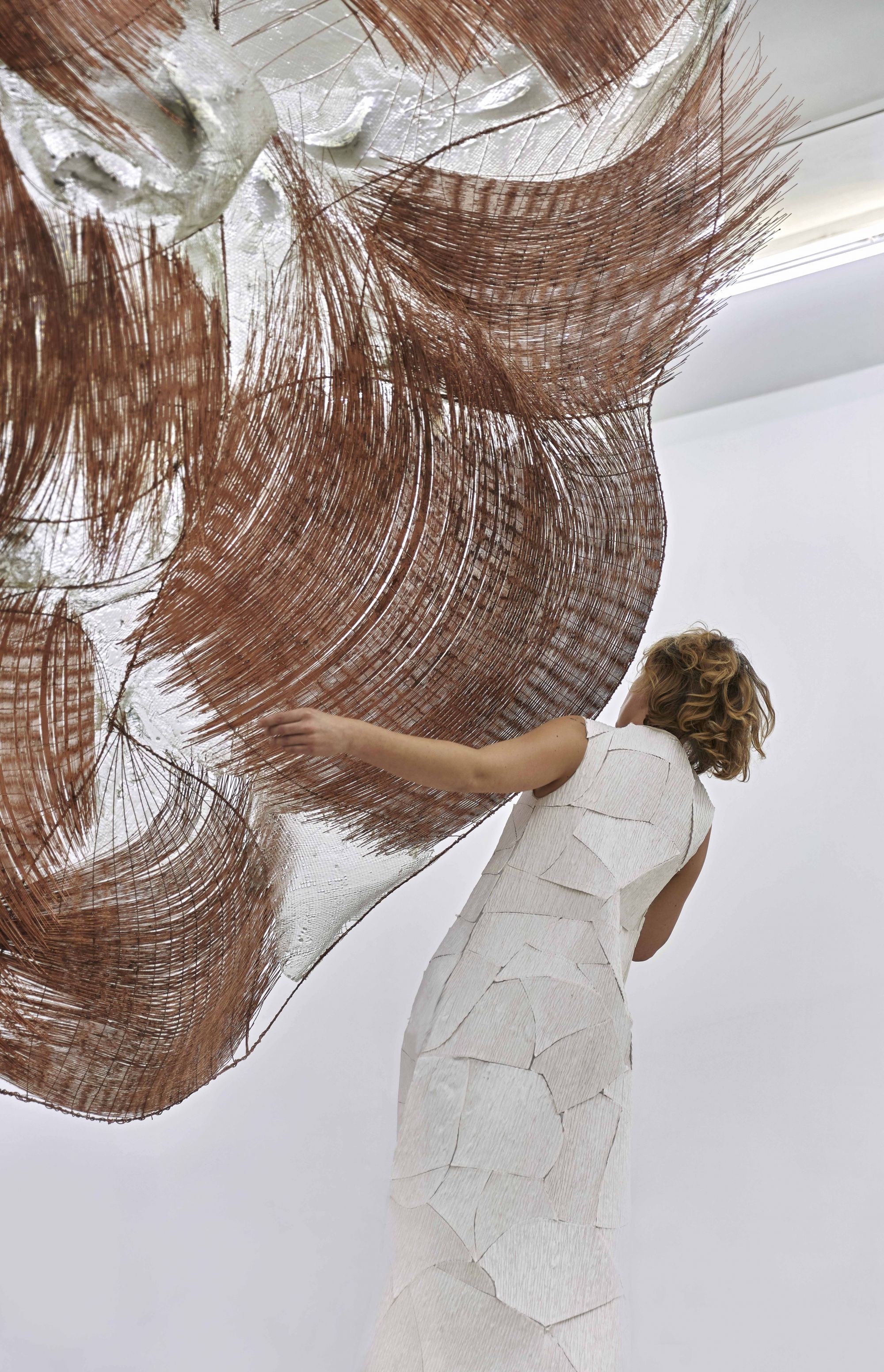
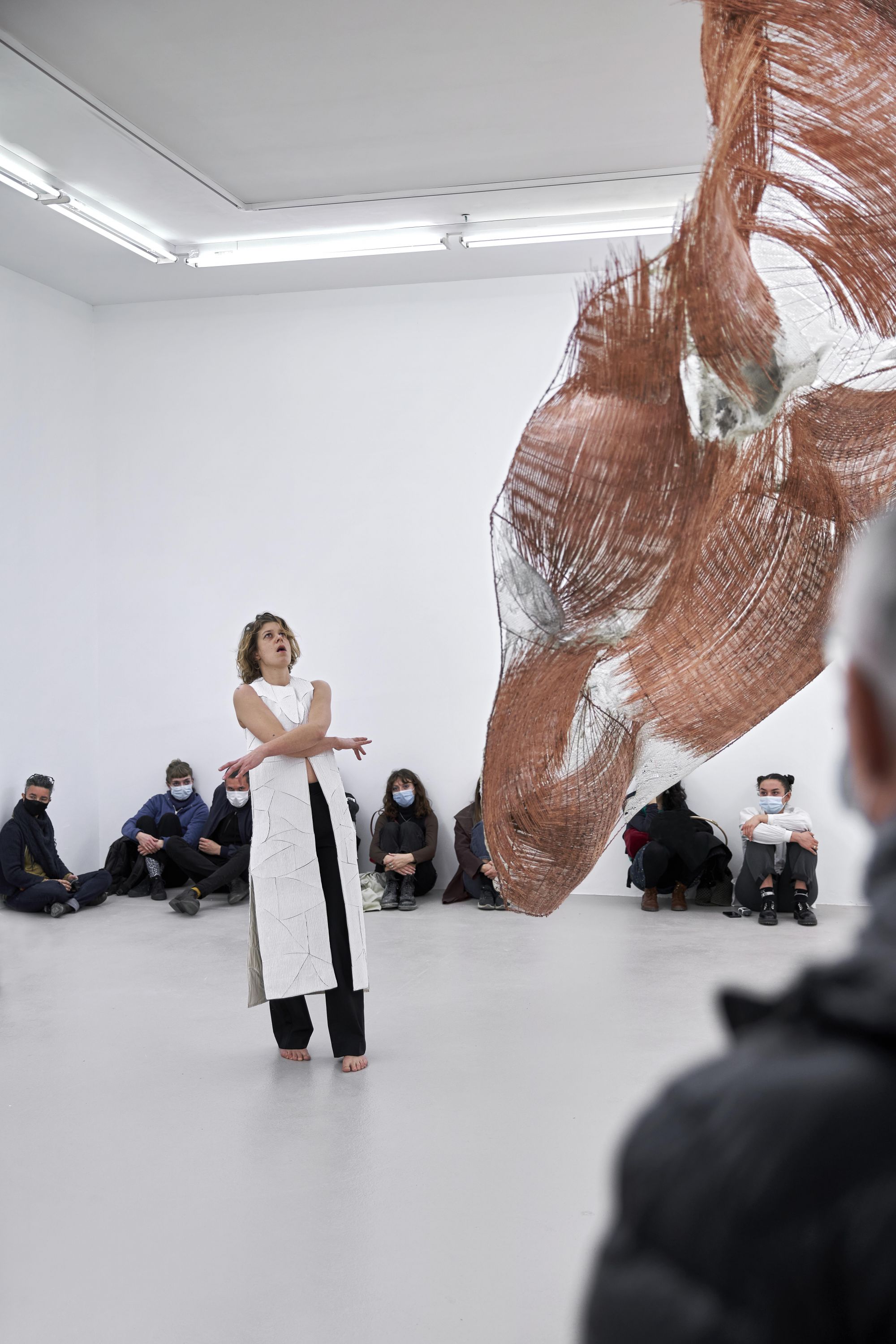
A sound system is hidden in the walls and ceiling. Six transducers (which set the walls and ceiling in vibration) transform their surface into a diffusion membrane. The space becomes a sound membrane that lets us hear footsteps, breaths, the sound of paper being carefully cut, the amplification of sound produced by the neon lights that illuminate the room on the ceiling. The space breathes, it is one with the sculptures. At times you can hear a voice passing through it, the sculpture in the centre seems to tremble. Other voices join it, similar in timbre, as if the first had been multiplied. The polyphony of sounds and voices is diffused randomly, guided by software. Thus one never hears the same thing and each visitor can reconstruct his or her own story.
The three elements are clues to a potential fiction.
In collaboration with Amélie Giacomini
Celle qui a: 160 × 270 cm, resin, copper basketry, pigments, 2016
Robe pour un corps évaporé: collab. Sébastien Meyer, 200 x 400cm, Kobb paper, 2020
Polyphonie aléatoire dissimulée dans les murs : collab. Nicolas Becker and Antoine Martin, sound installation, 6 tranducers, 2020
Performance: Anna Gaïotti, 2020
Thanks: Frédéric Mulatier, le Moulin du Got
Pictures: Thomas Lannes, Rituel.les, IAC Villeurbanne, 2020